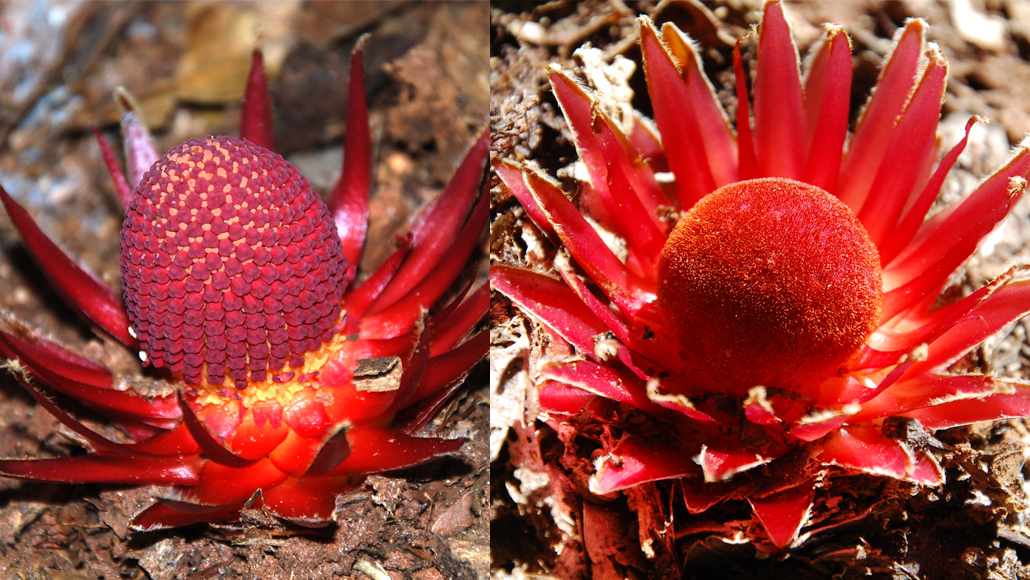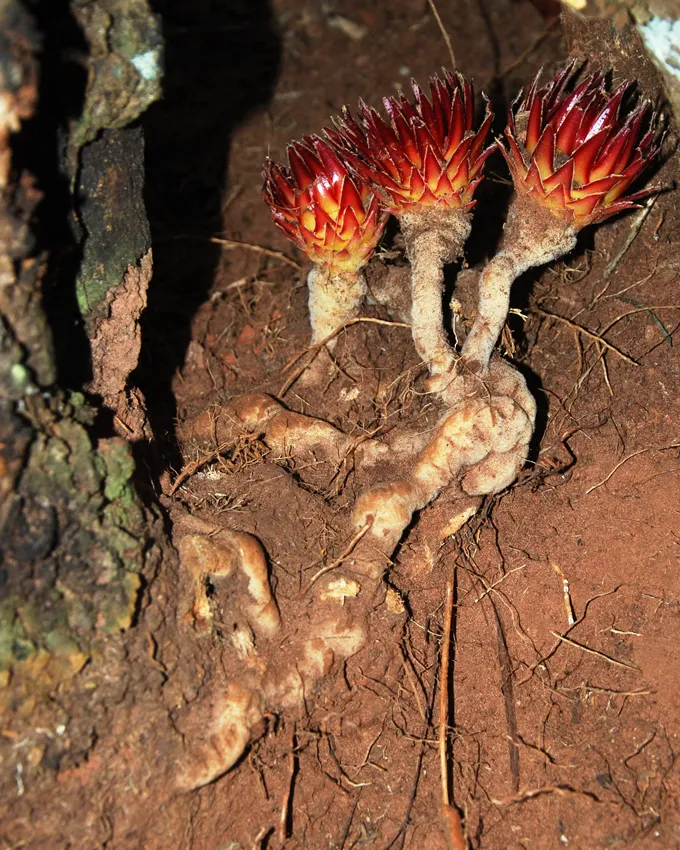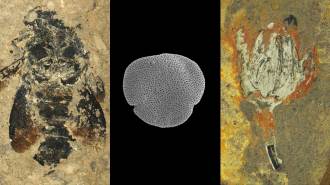This parasitic plant consists of just flashy flowers and creepy suckers
With only four known species, Langsdorffia are thieves stripped down to their essentials

Supreme grifters of the plant kingdom send up showy flowers (Langsdorffia hypogaea male, left; female, right) but don’t bother with even a single green leaf. Instead they just sneak around underground and steal all their food.
Jean Carlos Santos







